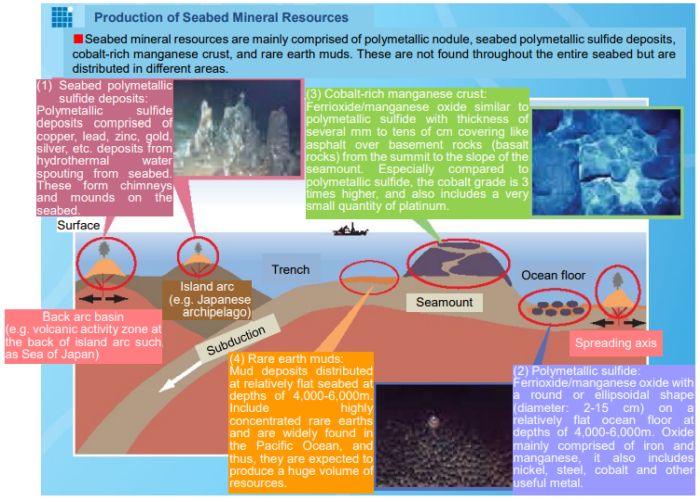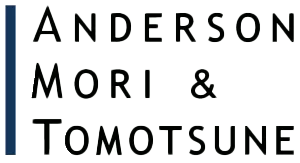I. Introduction
On April 28, 2023, the Fourth Master Plan on Ocean Policy (the "Plan") was adopted by a Cabinet Decision1. Since the formation of the Basic Act on Ocean Policy2 in 2007, Japan's ocean policies have been promoted comprehensively and systematically based on the Basic Act on Ocean Policy and the Master Plan on Ocean Policy. The Master Plan on Ocean Policy is reviewed roughly every five years and necessary changes are made, and this Plan is the fourth one.
The Plan lays down the two main pillars of "Comprehensive Maritime Security" and "Building a Sustainable Ocean" as its basic policy, and presents the promotion of industrial use of the ocean as an important measure to be steadily promoted. Since the Plan is expected to have a huge impact on the maritime and energy industries in Japan, we will briefly introduce its contents in this newsletter.
II. Contribution to Carbon Neutrality through the Promotion of Offshore Wind Power Generation etc.
In the Plan, offshore wind power generation is considered to be the best strategy for making renewable energy a mainstream power source, and it is re-confirmed that this is an extremely significant measure for achieving carbon neutrality3. On that basis, the Plan states that the government will promote the development of laws and regulations for expanding offshore wind power generation plants in Japan's exclusive economic zone (EEZ) and ensuring the development of technologies for domestic production, while giving due consideration to security and environmental impacts. In addition, the use of CCS (Carbon Dioxide Capture and Storage) is also considered to be important not only for reducing carbon dioxide emissions but also for achieving net negative carbon dioxide emissions. Specifically, the following points are stated in the Plan (see Chapter 2, 5(1) d. and (2) a. of the Plan):
- To achieve both maximum introduction of offshore wind power and lessening of the public burden, the government aims to establish projects with power capacities of 10 GW by 2030 and 30 GW to 45 GW by 2040, including floating-type offshore wind power plants.
- Under the leadership of the Cabinet Office, the Ministry of Economy, Trade and Industry, and the Ministry of Land, Infrastructure, Transport and Tourism, in order to expand the development of offshore wind power generation plants in Japan's EEZ, the government will improve the operational environment, including the development of laws while bearing in mind the consistency with the United Nations Convention on the Law of the Sea4.
- Steady progress will be made in procedures such as designation of promotion zones pursuant to the Renewable Energy Sea Area Utilization Act and public tender of businesses5, and the planned development of base ports, which are indispensable for the installation and maintenance of offshore wind power generation facilities, will also be promoted.
- In order to expand the introduction of offshore wind power generation, the government will take the initiative from the primary stage of project formation, and will consider methods of surveys conducted by Japan Organization for Metals and Energy Security (JOGMEC) to establish the "Japanese Centralized Model" as a mechanism to conduct surveys more quickly and efficiently6. Also, implementation methods using dedicated vessels will be established7.
- Aiming to achieve the target of introducing floating-type offshore wind power plants, the government will develop and demonstrate technologies for floating-type offshore wind power plants using the Green Innovation Fund, etc. In addition to establishing methods for design, manufacturing, installation, and maintenance that will lead to cost reduction, including from the viewpoint of disposal and recycling, the government will make efforts to create a robust domestic supply chain such as through domestic production of working vessels, and by providing support for wind turbine foundations and wind turbine component suppliers.
- In preparation for the launch of CCS business, the government will accelerate the development of the business environment, including the development of laws by 2030. The government will promote the development and use of suitable CCS sites and aim to secure an annual storage volume of 6 to 12 million tons by 2030.
III. Promotion of Development and Use of Seabed Resources
The Plan has confirmed that commercialization of marine energy and mineral resources in Japan's territorial waters and EEZ (methane hydrate, oil and natural gas, seabed polymetallic sulfide deposits, cobalt-rich manganese crust, polymetallic nodule, and rare earth muds, etc.) would allow them to become valuable national resources unaffected by international affairs or geopolitical risks, thereby improving Japan's degree of self-sufficiency8. The Plan states that the commercialization and industrialization of these natural resources is a significant goal from the perspective of economic security. Specifically, the following points are stated in the Plan (see Chapter 2, 5(1) a., c. and 6(2) a. of the Plan):
- The government aims to launch a project to commercialize the seabed polymetallic sulfide deposits in the late 2020s with the participation of private companies. It will also use AI and other new technologies to find new mineral deposits.
- The government will develop technologies to enable future commercial production of methane hydrates as an important energy resource contributing to Japan's stable energy supply. For this purpose, with the aim of launching commercialization projects led by private companies by FY 2030, the government will develop technologies to establish the technologies, knowledge, and systems required for the commercialization by private companies as an initiative for industrialization.
- The Ministry of Education, Culture, Sports, Science and
Technology will steadily promote research and development related
to marine mineral resources conducted by the Japan Agency for
Marine-Earth Science and Technology (JAMSTEC), including the
development of basic technologies for exploring marine mineral
resources, elucidation of the origin of seabed polymetallic sulfide
deposits, and building survey methodologies. The Ministry will also
promote the transfer of the outcomes to industrial
circles9.
[Reference] Material prepared by JOGMEC "Marine Resources and Energy (in Japanese)"

IV. Securing Maritime Transportation and Development of Next-Generation Marine Mobility
In the Plan, the importance of securing stable maritime transportation was reaffirmed from the viewpoint of economic security. Ensuring the safety and security of maritime transport is also vital in light of recent marine accidents, such as the sightseeing boat accident in Shiretoko, the oil spill in Mauritius, and the grounding accident in the Suez Canal. In addition, it is worth noting that the Plan mentions the development of next-generation marine mobility. Specifically, the following points are stated in the Plan (see Chapter 1, 3-3(2) b. and Chapter 2, 5(3) of the Plan):
- In order to build a stable and effective network for the maritime transportation of resources and energy, the government will maintain quays to facilitate large-scale ships docking at international bulk strategy port. The government will also promote coordinated transportation by large-scale ships based on business-to-business collaboration.
- By taking advantage of Japan's position as one of the world's leading importers of LNG, the government will promote efforts to establish LNG bunkering hubs and strengthen its international competitiveness by expanding port calls of LNG fuel vessels.
- With regard to coastal shipping, the government will promote the use of coastal ferries, RORO ships, etc., and promote efforts to stimulate demand thereof as an effective modal shift toward low-carbon shipping, taking into consideration trends such as the application of upper limits of overtime work for truck drivers from FY202410.
- Marine robotics, including robotics involved in next-generation ocean mobility, such as in the form of autonomous underwater vehicles (AUVs), autonomous surface vehicles (ASVs), and remotely operated vehicles (ROVs), is an important fundamental technology in marine science and technology. It is expected to be used for resolving issues existing in coastal and remote island areas, ocean survey and monitoring, marine resource exploration, and installation and maintenance of offshore wind power generation plants, and thus enable the growth of related domestic industries11.
V. Final Remarks
This newsletter mainly outlines matters related to the promotion of the industrial use of the ocean as stated in the Plan. The Plan exclusively deals with policy goals that are to be implemented, and subsequently the competent ministries and agencies are expected to materialize these goals. Each of the domains mentioned in this newsletter are expected to be commercialized in the future. Therefore, close attention should be paid to the steps taken by each of the competent ministries and agencies as they flesh out the details of the new legislation that will take form based on the Plan.
Footnotes
1. https://www8.cao.go.jp/ocean/policies/plan/plan04/plan04.html (in Japanese)
2. https://www.japaneselawtranslation.go.jp/en/laws/view/3755
3. One of the latest developments related to carbon neutral initiative is the passage of the GX Promotion Act. For more information on the GX Promotion Act, please refer to our newsletter in July 2023 "Enactment of GX Promotion Act and its Impact on Corporate Decarbonization."
4. For consistency with the United Nations Convention on the Law of the Sea and the development of laws, please refer to our newsletter in April 2023 "Various Issues Concerning Law of the Sea and Maritime Law in Relation to Offshore Wind Power Generation in Japan's Exclusive Economic Zone."
5. Please refer to our newsletter in February 2023 "Offshore Wind Power Generation - Changes in Public Tender (Round 2) (in Japanese)" for recent trends in public tender procedures.
6. JOGMEC announced the outline of the survey plan using the centralized model in January 2023. https://www.jogmec.go.jp/offshore-wind/offshore-wind_10_00002.html (in Japanese)
7. In March 2023, the Ministry of Land, Infrastructure, Transport and Tourism revised the Technical Standards and Safety Guidelines for Floating Offshore Wind Power Generation Facilities, and newly established the Design and Construction Guidelines for Concrete Floating-type Offshore Wind Power Generation Facilities and the Safety Design Guidelines for CTVs (Crew Transfer Vessel for offshore wind power generation facilities). https://www.mlit.go.jp/maritime/maritime_fr6_000006.html (in Japanese)
8. The Agency for Natural Resources and Energy announced its Plan for the Development of Marine Energy and Resources (in Japanese) in 2019.The relevant plan is expected to be revised with regard to initiatives from FY 2023 onwards in accordance with the Plan.
9. JASMTEC is a research promotion agency for the construction of the ocean security platform, one of the tasks of the Third Strategic Innovation Promotion Program (SIP) (in Japanese) implemented by the Cabinet Office.
10. The Ministry of Health, Labour and Welfare (Chiba Labour Bureau), "Application of Upper Limit Regulations for Construction Business and Driving Business (in Japanese)".
11. In April 2023, the Cabinet Office announced the launch of a public-private platform for AUVs (https://www8.cao.go.jp/ocean/policies/auv/call_for_participants/0418.html (in Japanese)). In March 2021, the Maritime Bureau of the Ministry of Land, Infrastructure, Transport and Tourism released the "Guidelines for Safe Operation of AUVs (in Japanese)". In April 2022, the "Safety Guidelines for Autonomous Surface Ship Operations (in Japanese)" was published.
The content of this article is intended to provide a general guide to the subject matter. Specialist advice should be sought about your specific circumstances.



